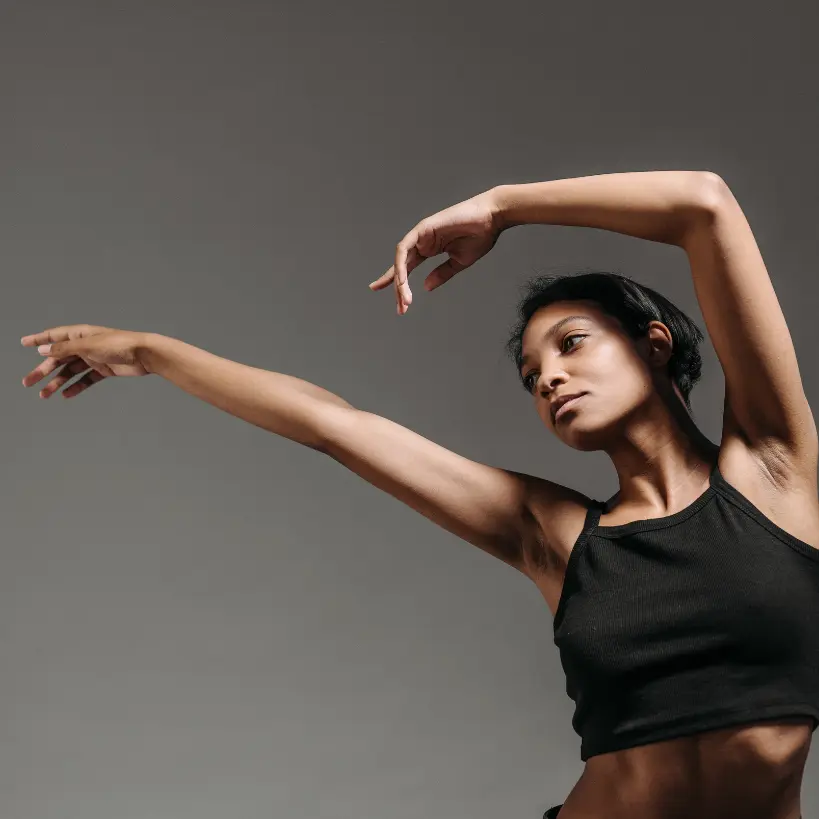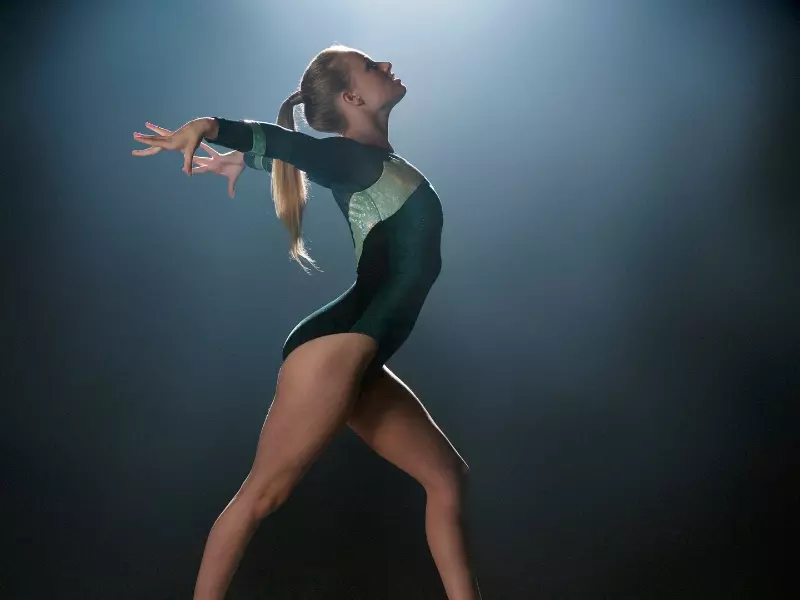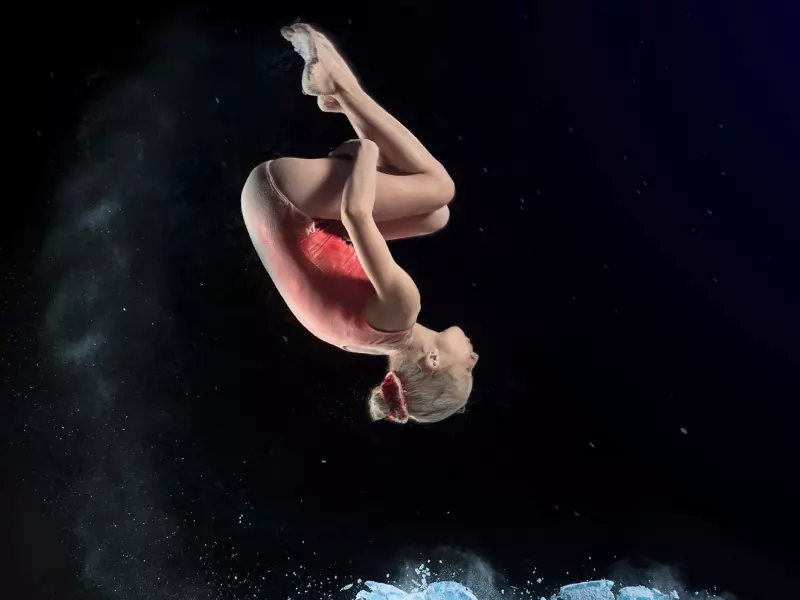In the world of gymnastics, a back handspring stands as an emblem of grace, agility, and prowess. Many gaze in awe at the athletes who execute it flawlessly, often pondering about the time and effort it takes to attain such mastery. Let’s delve into the heart of this query and unravel the intricate tapestry of factors that govern the learning pace of this fascinating move.
Contents
I. What is a Back Handspring?
A back handspring is a gymnastic move where the gymnast starts from a standing position, swings their arms, arches their back, and jumps backwards, landing on their hands and then immediately rebounding off them to land back on their feet. The move requires a combination of strength, balance, flexibility, and coordination.
II. Factors Influencing the Learning Curve
Learning a new skill or activity presents varying challenges for different individuals. The speed at which one picks up a new capability is often referred to as the learning curve. Several factors influence this curve, making the process faster for some and slower for others.
1) Physical Conditioning
Physical conditioning is a critical aspect of learning, especially in disciplines that require physical prowess such as sports, dance, or martial arts.
- Muscle Memory: The more conditioned the muscles are, the easier it is for an individual to perform repetitive tasks with precision and without fatigue. This is essential for athletes or dancers who need their muscles to ‘remember’ certain movements.
- Endurance: Proper conditioning improves stamina. A person with better endurance can sustain longer periods of learning or practice without getting overly tired.
- Strength and Coordination: Building strength and coordination can make learning certain skills easier and more efficient, as the body can more readily adapt to new challenges.
2) Age and Flexibility
The age at which a person starts to learn something new and their flexibility—both mental and physical—can significantly influence the learning curve.
- Neuroplasticity: Young brains have higher neuroplasticity, which means they can adapt and change more readily in response to new experiences. This makes it often easier for children to pick up new languages, instruments, or sports.
- Physical Flexibility: Younger individuals are generally more flexible, which can be advantageous in activities like gymnastics or dance. However, with regular practice and conditioning, older individuals can maintain or even improve their flexibility.
- Life Experience: Older learners bring a wealth of life experiences which can aid in understanding complex topics or seeing things from different perspectives.
3) Coaching and Training Environment
The setting in which learning takes place and the quality of instruction play crucial roles in determining the steepness of the learning curve.
- Qualified Instructors: Having an experienced and knowledgeable coach can accelerate learning by providing valuable insights, feedback, and personalized guidance.
- Safe and Positive Environment: A training environment that feels safe and encouraging allows learners to take risks, make mistakes, and thus learn more effectively.
- Availability of Resources: Access to the necessary tools, materials, and resources can greatly aid in the learning process.
4) Dedication & Practice
Arguably the most critical factor in mastering a new skill or subject is the amount of dedication and practice an individual commits.
- Consistency: Regular practice helps reinforce learning and develop proficiency. It’s often said that “practice makes perfect,” and consistent practice can indeed result in mastery over time.
- Quality Over Quantity: It’s not just about the amount of time spent practicing but the quality of that practice. Focused, deliberate practice can be more beneficial than hours of unfocused repetition.
- Mindset: Having a growth mindset—believing that abilities can be developed through dedication and hard work—can influence how an individual approaches challenges and setbacks in the learning process.
In conclusion, while there are innate factors like age and physical flexibility that influence the learning curve, many external factors, such as the environment and dedication, play equally crucial roles. A combination of these factors can determine the pace and efficiency of learning for different individuals.
III. The Ideal Training Timeline
Embarking on the journey to master a back handspring requires methodical progression. Like building a house, it starts with a solid foundation and builds upwards, layer by layer. The following timeline represents an idealized framework, bearing in mind that individual progress rates will vary.
1) Introduction and Basics (1-2 weeks)
- Objective: The primary goal during this phase is to acquaint oneself with the very essence of a back handspring. It’s about understanding, not executing.
- Activities:
- Visualization: Before attempting the move, visualize it. Understanding the sequence mentally can aid physical execution.
- Basic Drills: Simple exercises like backbends, handstands, or bridge push-ups can prepare the body for the more complex move ahead.
- Safety First: Use soft mats or padded floors to prevent injuries and build confidence.
2) Strength and Flexibility Training (2-4 weeks)
- Objective: Strengthen the specific muscle groups involved and enhance the flexibility needed for a seamless back handspring.
- Activities:
- Targeted Strength Training: Focus on exercises like squats, lunges, and plyometric jumps to boost leg strength. Incorporate push-ups and tricep dips for arm strength.
- Flexibility Routines: Engage in regular stretching, especially targeting the back, shoulders, and legs. Yoga can be a beneficial adjunct here.
3) Assisted Handsprings (1-3 months)
- Objective: Start executing the back handspring with support to ensure correct form and boost confidence.
- Activities:
- Spotted Practice: A seasoned coach or spotter can assist in the move, ensuring proper arch, hand placement, and landing.
- Safety Equipment: Utilize equipment like bouncy floors or spotting belts for added safety and confidence.
- Feedback Loop: Regularly review progress, identify areas of improvement, and adjust techniques accordingly.
4) Solo Execution (3-6 months)
- Objective: Transition from assisted to independent execution, with a focus on safety and technique.
- Activities:
- Gradual Independence: Begin by minimizing assistance over time, ensuring that the learner feels confident at each step.
- Constant Supervision: Even as assistance is reduced, maintain supervision to swiftly correct any deviations and ensure safety.
- Video Analysis: Record attempts to analyze form and technique, making necessary adjustments.
5) Refinement and Mastery (6 months – 1 year)
- Objective: Perfect the back handspring, aiming for fluidity, precision, and grace.
- Activities:
- Nuance Focus: Dive deep into the intricacies of the move. This could involve optimizing hand placement, perfecting the arch, or refining the landing.
- Routine Integration: Start incorporating the back handspring into larger gymnastic routines or sequences.
- Peer Review and Expert Feedback: Engage peers and experts for feedback, gleaning insights that might have been overlooked.
In this journey, patience, persistence, and a growth mindset are indispensable allies. While the timeline provides a structured approach, it’s essential to respect one’s own pace, prioritizing safety and mastery over speed.
IV. Step-by-Step Guide to Learning a Back Handspring
Executing a back handspring is no small feat; it’s a blend of athleticism, coordination, and courage. A back handspring sees the performer leap backwards onto their hands and then spring back onto their feet. Often, it’s a rite of passage in gymnastics and cheerleading, signaling a transition to more advanced moves. If you’re dreaming of nailing that flawless back handspring, here’s a structured approach to get you there:
1. Preparatory Phase: Building Foundations
- Mental Visualization: Before you even start, it’s beneficial to mentally walk through the entire move. Visualization helps in understanding the body dynamics involved.
- Safety Measures: Ensure you have a soft landing surface like a gymnastics mat. Never practice on hard surfaces initially.
- Physical Conditioning: Strengthen your core, arms, and legs with exercises like planks, push-ups, and squats. This is crucial to support the weight of your body and generate the power needed for the spring.
2. Basic Movements and Drills
- Backward Roll: Begin with a simple backward roll. This gets you accustomed to the motion of going backward and supports neck strength.
- Bridge Stretch: This helps in developing back flexibility. From a lying position, push your body up using your arms and legs to form an arch.
- Jump Back onto Incline Mat: Using an inclined mat, stand at the higher end and practice jumping backward onto your hands. This drill helps mimic the first part of the handspring.
3. Gaining Confidence with Assistance
- Spotter Assistance: Engage with a coach or a trained individual who can guide and support you through the movement. This provides an added layer of safety and builds your confidence.
- Use of Props: Utilize props like a bouncy trampoline or a tumble track. These provide additional momentum, making it easier to complete the back handspring.
4. Focusing on Technique
- Hand Placement: Ensure your hands are shoulder-width apart for stability.
- Straight Arms: Lock your arms straight when you land on them. Bending may lead to injury and won’t provide the support needed to spring back up.
- Tight Core: Engage your core throughout the move to ensure a smooth arc and safe landing.
5. Moving Towards Independence
- Solo Attempts on Soft Surfaces: Gradually, as confidence builds, try the back handspring without assistance but continue to use soft surfaces like mats or padded floors.
- Repeated Drills: The key to perfecting any skill is repetition. Consistent practice ingrains the motion into muscle memory.
6. Refining and Mastery
- Analyze and Correct: Video record your attempts. This allows you to analyze your form and make necessary corrections.
- Fluidity: Aim for a smooth, uninterrupted motion from start to finish.
- Stamina Building: Challenge yourself by trying multiple back handsprings in succession.
V. Common Challenges and Solutions
Learning a back handspring is a journey filled with excitement, triumphs, and hurdles. Several challenges might arise as one attempts to master this skill, but with the right solutions, they can be overcome. Let’s delve into the common challenges faced by learners and the solutions to tackle them:
1. Challenge: Fear of Going Backwards
- Solution: One of the most significant challenges beginners face is the innate fear of flinging oneself backward. To combat this, start with basic backward rolls to become comfortable with the sensation. Over time, using a sloped or incline mat can help ease the transition into a full back handspring. Mental visualization and positive reinforcement also play crucial roles in overcoming this fear.
2. Challenge: Lack of Strength
- Solution: A back handspring requires adequate strength in the arms, shoulders, and core. If strength is lacking, the move can feel impossible or even lead to injury. Integrate strength training into your routine, focusing on exercises like push-ups, planks, and handstands against a wall. Resistance bands and weights can also be used to build targeted muscle strength.
3. Challenge: Inadequate Flexibility
- Solution: Flexibility, particularly in the back and shoulders, is crucial for a smooth handspring. Incorporate regular stretching sessions into your routine, emphasizing backbends, shoulder stretches, and splits. Yoga and pilates can be excellent disciplines to enhance overall flexibility.
4. Challenge: Incorrect Technique
- Solution: The right technique is paramount to execute a back handspring successfully. Seek feedback from experienced coaches or peers. Video recording your attempts and analyzing them can offer insights into where the technique needs improvement. Break the move into parts and work on perfecting each segment.
5. Challenge: Difficulty in Achieving Lift and Arc
- Solution: The arc and lift are vital components of the back handspring. Plyometric exercises, which enhance explosive power, can help. Jumping exercises, such as box jumps or burpees, can boost the necessary power in the legs. Additionally, practicing on a trampoline or spring floor can help achieve the desired lift.
6. Challenge: Mental Block or Plateaus
- Solution: It’s not uncommon to hit a mental block or feel like you’re not progressing after a certain point. Taking a short break or cross-training in a related discipline can refresh the mind and body. Visualization exercises and positive affirmations can also help break through mental barriers.
7. Challenge: Inconsistent Practice
- Solution: Consistency is the key to mastering any skill. Set a fixed schedule for practice, and stick to it. If motivation wanes, join a group class or find a practice partner to keep you accountable.
8. Challenge: Lack of Proper Equipment or Facilities
- Solution: Access to proper equipment like mats, spring floors, or trampolines can significantly aid the learning process. If these aren’t readily available, consider joining a local gymnastics center or seeking out public facilities that offer the necessary equipment.
In conclusion, while learning a back handspring comes with its set of challenges, they are not insurmountable. With patience, dedication, proper training, and by adopting the right solutions, these challenges can be transformed into stepping stones towards mastery.
FAQs
1. How long does it typically take to learn a back handspring?
The time it takes to learn a back handspring varies widely based on individual factors such as age, fitness level, flexibility, and prior experience. On average, with consistent practice and training, it can take anywhere from a few months to over a year.
2. Can adults learn a back handspring?
Yes, adults can learn a back handspring. However, it might take them longer than children due to factors like decreased flexibility and longer recovery times. It’s essential for adults to ensure proper conditioning and to train under expert supervision.
3. Is it possible to learn a back handspring at home?
While it is possible, it is not recommended to learn a back handspring without proper supervision, especially if you’re a beginner. Training under a qualified coach and in a suitable environment reduces the risk of injury.
4. How often should I practice to learn a back handspring efficiently?
Consistency is key. It’s better to practice shorter durations multiple times a week (3-5 times) than to have longer, infrequent sessions. This helps with muscle memory and maintaining strength and flexibility.
5. Do I need any specific equipment?
While you don’t need a lot of equipment, practicing on a spring floor or a gymnastics mat can provide cushioning and reduce the risk of injury. As you progress, training aids like bungee harnesses can also be beneficial.
6. What are the primary prerequisites for learning a back handspring?
Core strength, leg power, and good flexibility, especially in the back and shoulders, are crucial. Previous experience with moves like backbends or bridge kick-overs can also be advantageous.
7. Is it normal to feel scared when attempting a back handspring for the first time?
Yes, it’s quite common. The idea of flipping backward can be intimidating. It’s essential to work through this fear progressively and under supervision to ensure safety.
8. Can I learn a back handspring without a coach?
While some self-taught gymnasts have learned on their own, having a coach significantly accelerates the learning process and ensures that you’re using the correct technique, reducing the risk of injuries.
9. What should I do if I experience pain during practice?
Stop immediately. Persistent pain is a sign that something is wrong. It’s essential to rest, consult with your coach, and if necessary, seek medical advice. Never push through pain.
10. How can I maintain my back handspring skills once I’ve learned them?
Regular practice is essential to keep the muscle memory and strength intact. Even after mastering the move, periodic practice and conditioning exercises will help maintain proficiency.
Conclusion
In conclusion, learning a back handspring is a challenging and time-consuming process that requires dedication, practice, and proper coaching. The length of time it takes to master this skill can vary greatly depending on individual factors such as age, flexibility, strength, and previous experience in gymnastics or other related activities.
While some may be able to learn a back handspring within a few months of consistent training, others may take several years to achieve the same level of proficiency. It is important to remember that each person’s journey is unique, and progress should be measured by personal growth rather than comparing oneself to others. So don’t get discouraged if progress is slow – keep practicing and never give up.


